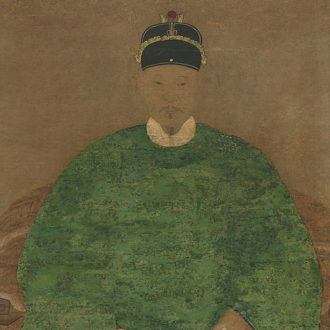When working with historical sources, particularly secondary sources, one has to consider the levels of mediation that the historical narrative has gone through before it finally reaches the researcher. We all have to use primary and secondary sources in our work. But something often overlooked is the extent to which there are degrees of truth, or what Stephen Colbert famously called “truthiness,” in the sources that we encounter. We learn in English class about the idea of the unreliable narrator. Well, the exact same thing applies when studying history. Except, with history, everyone is unreliable to some degree, as demonstrated by my reading of The Battles of Coxinga.

To use an example from my own work, I’m currently reading through a Japanese play, The Battles of Coxinga, for my final paper in HIS 439: China’s Frontiers with Professor Janet Chen. It’s about the adventures of a 17th Century Ming Dynasty general, Zheng Chenggong (also known as Coxinga), who led an abortive attempt to restore that dynasty after its fall to the Qing in 1644. It is clear that he gained a large degree of notoriety and a place in history for his actions. In Taiwan, he defeated the Dutch , who labeled him a “pirate.” His victory over the Dutch led to his being hailed as a folk hero, and there are even a number of shrines established in his honor throughout Taiwan and Mainland China. What isn’t so clear, though, is exactly what happened in his life prior to his ascension as a major military figure.
The Battles of Coxinga was written in 1715 by a Japanese author, Chikamatsu Monzaemon, a couple of generations or so after Zheng’s death in 1662. The exact details of Zheng’s life are somewhat unclear in the historical record, given that most of the sources used by historians were written generations after his death. The few contemporary sources that exist were written somewhat unreliably by his enemies — the Dutch and the Qing dynasty. So, the relative lack of clarity about his life allows authors to weave their own narratives about the figure, adapting him to fit their own historical or political needs.
The real Zheng was half Chinese and half Japanese, but you wouldn’t really know it from reading this play. In Chikamatsu’s telling of Zheng’s story, he is a Japanese man who frequently extols his Japanese heritage at the expense of his Chinese heritage. It’s a fictionalized account of his adventures — but written for a Japanese audience. So, the man who becomes a folk hero in China has lines like “you who despise the Japanese for coming from a small country — have you learned now the meaning of Japanese prowess, before which even tigers tremble?” (89). Rather bizarre for a Chinese folk hero to extol the virtues of the Japanese, no? The author even goes so far as to describe him as “the prodigy of Japan, a man who illuminates a foreign land with the brilliance of his martial talents” (108). Zheng’s version of Coxinga only fights the Qing Dynasty, with no mention at all of the Dutch.
Anyway, to make a long story short, this story became very popular in Japan, helping to popularize a major Chinese figure in an otherwise isolationist country. At first glance, the propagandist nature of this play might consign it to the rubbish heap of history. But in terms of the research process, it is useful to see how different historical narratives emerge. Chikamatsu’s version of Coxinga succeeds in his conquests because of his adherence to Japanese military strategy and values. Chinese writings of his story correlate his success with his adherence to Confucian ideology. It goes to show that we can never view any historical source in isolation — and that we should approach our readings with a healthy dose of skepticism.
— Nicholas Wu, Social Sciences Correspondent
Source: Chikamatsu, Monzaemon, Donald Keene, and Mark Van Doren. The Battles of Coxinga: Chikamatsu’s Puppet Play, Its Background and Importance. London: Taylor’s Foreign Press, 1951.

